Derby's Heritage Part 17 - Sadler Gate (east)
w/e 29 May 2011
All this week's pictures were taken
with a Kodak DX6490
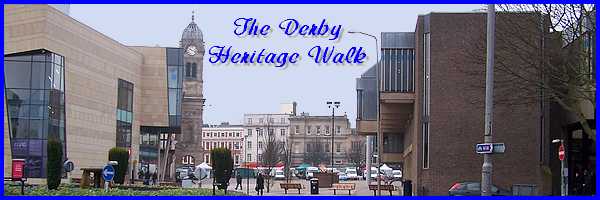
This seventeenth part of our heritage walk around
the city will actually return us close to the start of the walk
in the Market Place but it is not the end of the walk and we
are only passing through on our way to the area south of the
city centre. We pick up the route though towards the eastern
end of Sadler Gate.
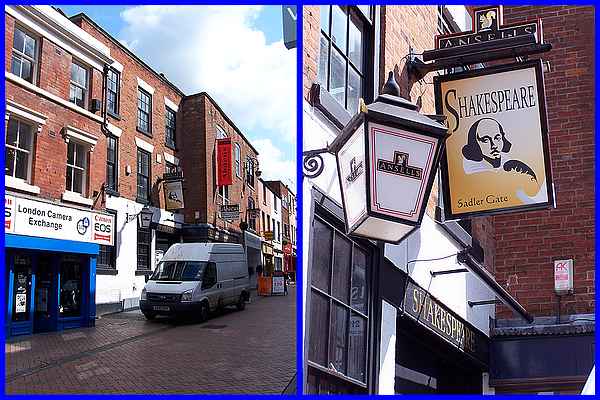
We have already seen previously that tradesmen changed the frontages
of many of the buildings in Sadler Gate whilst leaving the rear
of the properties intact but one that still shows some old features
at the front is the Shakespeare Inn but even this has been altered
to display a Georgian or early Victorian façade.
|
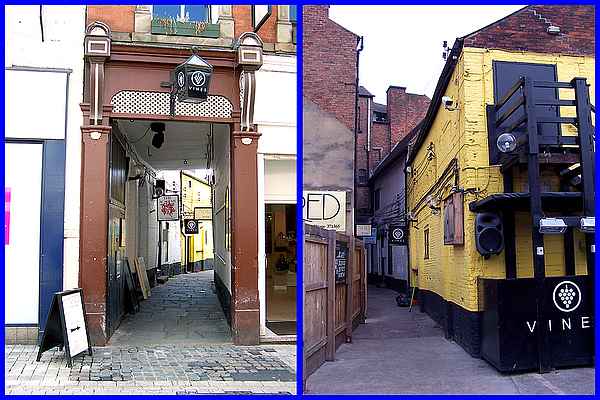
On the other side of the street is the passage (seen here from
both ends) to another of the yards that are also a feature of
Sadler Gate. The passage now leads to the Vines Bar but the hooks
hanging from the ceiling in the passage give rise to the belief
that this could possibly have been a butcher's or even an abattoir.
|
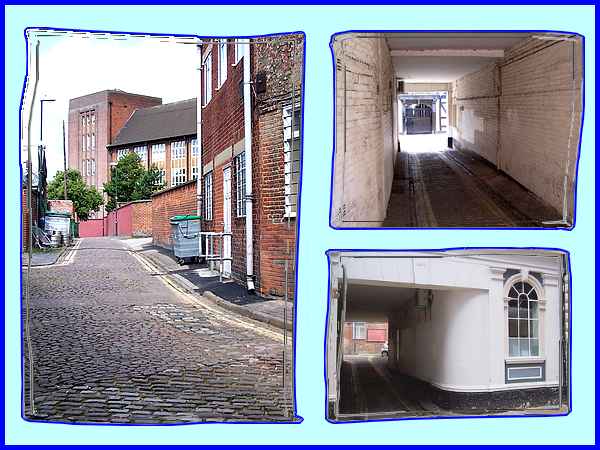
When we first entered the western end of Sadler Gate we passed
the entrance to George's Yard /Lane. This is thought to have
taken its name from the George Inn at that end of the street
but although the lane is not much to look at today, the origin
of its name is quite fascinating. The George Inn was recorded
as early as 1648 and is said to have been named after the jewel
of the Order of the Garter which was dedicated to St George,
England's patron saint. Before that however, the lane was called
Juddekynlone (Judkin Lane), Jud being an ancient dialect for
George. So it is quite possible that the name dates back to the
1300s. Whatever the truth of the matter, the inn yard turned
to run almost the whole length of Sadler Gate behind Old Blacksmith's
Yard to re-emerge near the eastern end by another covered entry
opposite the Old Bell Hotel.
|
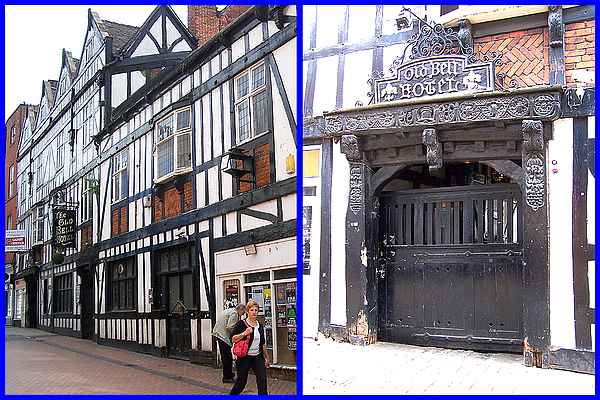
The passage from George's Lane enters Sadler Gate opposite the
gated entry (above right) to the Grade II listed Old Bell Hotel
that was built for the Meynell family as a coaching inn about
1680. The mock-Tudor frontage is relatively new by comparison
being added as part of a refurbishment in 1929 by builders Ford
and Weston, who used timber recycled from other local sites.
The brick built hotel extended in 1776 with a ballroom, is the
last coaching inn to survive in Derby and the three storey building
with attics in the gables still contains a seventeenth century
timber staircase.
|
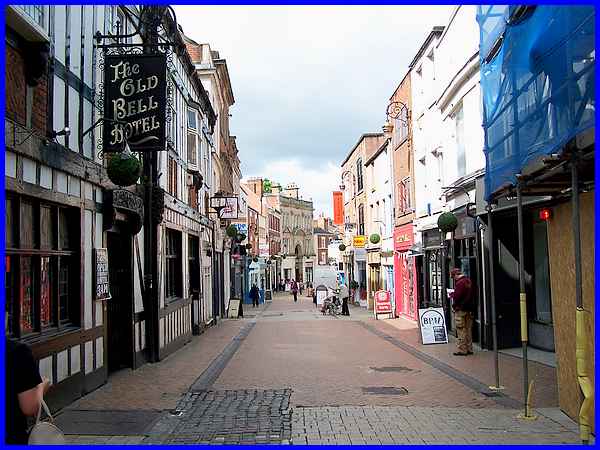
The Old Bell Hotel is probably the most striking building at
this end of the street but the view down Sadler Gate is balanced
by the Strand Arcade at the far end. Although the street is now
pedestrianised, note the patches of traditional cobblestones
at intervals that perhaps tell a story of a previous road surface.
|
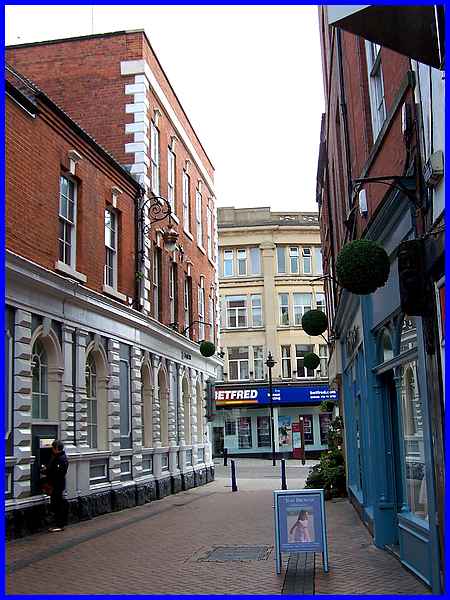
As we reach the end of Sadler Gate it is perhaps worth pointing
out the width of the street and noting once more that before
the nineteenth century all the main roads in Derby were only
this wide. This end of Sadler Gate leads us back to Iron Gate
where we noted that the eastern side had been demolished and
rebuilt to increase the width of the road. The Lloyds TSB building
seen here on the left is also one that we saw earlier as it is
the eighteenth century building that was commandeered as the
residence of Sir John Gordon of Glenbucket when Bonnie Prince
Charlie stayed in Derby in 1745.
|
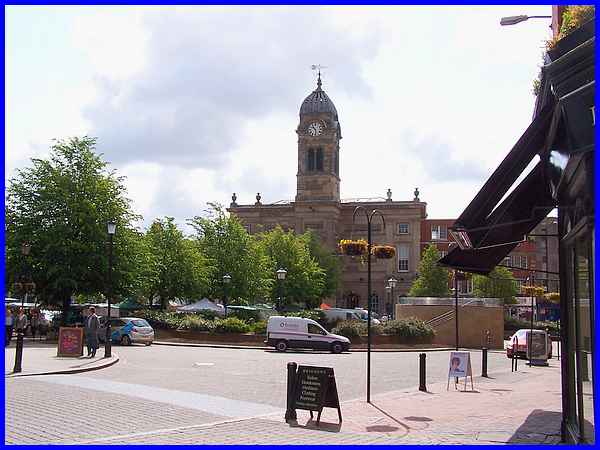
Turning right into Iron Gate takes us back to the Market Place
and opens up a fine view of the Guildhall but we shall discover
more about that later as on this occasion we are only passing
through and on our way to the Corn Market and the southern part
of the city centre.
|
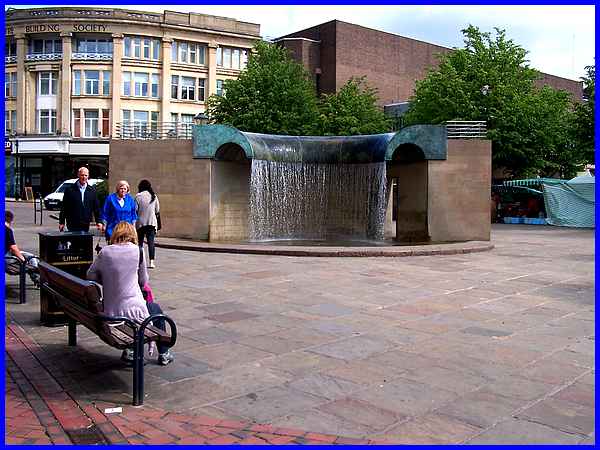
In passing though it gives me the chance to capture this image
of the Waterfall Feature. At the start of this series I wrote
that this was "the waterless feature" as the water
had been switched off and that the feature was built in 1995
to a design by William Pye. I also wrote "I'll try and capture
an image when it is in full flow" so true to my word and
as it looks so much better when the water is flowing, here it
is.
|

